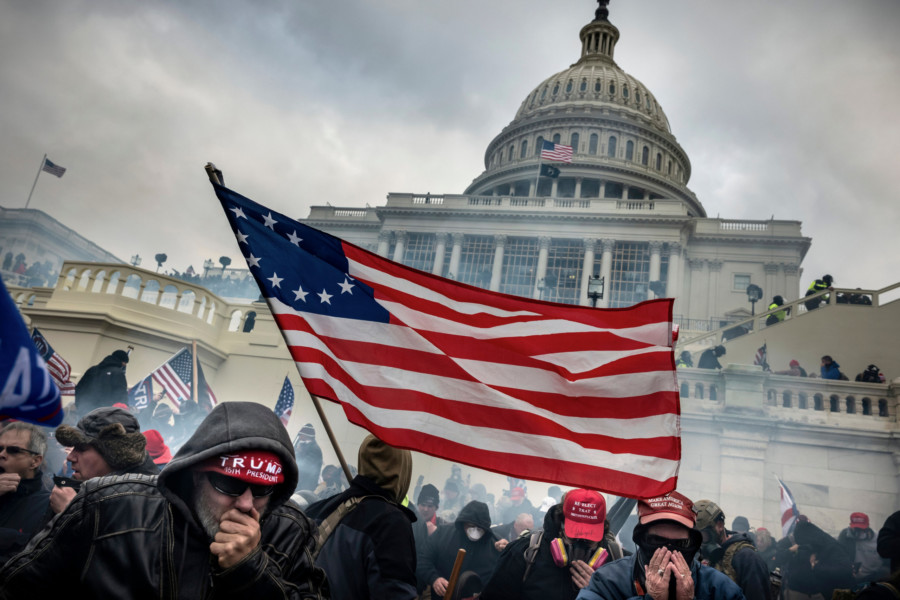David Butow’s Documentation of the Trump Presidency in ‘Brink’
Freelance photojournalist David Butow first caught my attention in 2018 when his image of Senator Jeff Flake became viral, thanks to its intensity of emotion combined with its near perfect composition – so much so that Time magazine asked David himself how he came to capture it! Following that tweet thread, David reached out over Twitter, and we finally met up in person shortly afterwards for coffee where we discussed his book project.
Butow was stunned by the rapid political shifts and an increasingly divided electorate, prompting him to relocate from California to Washington D.C. in order to document Donald Trump’s presidency and create “Brink,” his three-act book about it. Although he expected incompetence from Trump’s team, he underestimated their treachery – as evidenced in its final notes of “Brink.”
With his unique perspective and amazing eye, I was eager to gain more insight into how the book came into fruition. So, I reached out via e-mail.
PhotoShelter: What was the impetus behind your move to Washington D.C in 2017?
David: Before the election, I thought Hillary Clinton was going to win, so when it became clear she wouldn’t, I joked with friends and told them I might move to D.C. as soon as Trump won “for a front row seat to the apocalypse”. After the election I realized this might be one of the most turbulent periods in government history and decided I wanted a front-row seat! Considering my background (political science major in college; photojournalism often covering public policy results as photojournalism), plus never having worked in D.C because Californian life held more opportunities – now was certainly my chance!
Your daily news photos were part of your life under Trump. Was there a specific moment when you realized your photos should be put together into book form instead of just remaining daily updates?
DB: My approach was slow-building. From day one, my images had long-term viability in mind – I considered how others in the future might view them in relation to history and current affairs.
As events began to unfold, it was difficult to predict how they would develop and the significance of this period of my life. Writing books is difficult; therefore I wasn’t counting on making my book come together, but after January 6th it seemed important enough for me to try my hardest and make it happen; too important an event had occurred without trying to understand them in long form form.
Covering politics in D.C. can sometimes feel like covering Groundhog Day; briefing rooms and congressional spaces all tend towards uniformity. Do you attempt to capture unique scenes within these places or seek other locations that capture the zeitgeist?
One reason I decided to cover these events was out of curiosity for what occurred beyond what could be seen by television cameras. Which peripheral activities were taking place and could you capture some element of D.C. culture through still photography that stood out from what other excellent photographers were capturing? Sometimes that required forgoing more traditional approaches in favor of something more unexpected. That was quite enjoyable, and every now and then something unexpected would arise – often near to my usual photo spots – something I hadn’t expected! Though sometimes this meant taking shots outside in the hallway in addition to taking images in hearing rooms.
One of my favorite photos is your image of Sen. Jeff Flake during a Senate Judiciary Committee meeting regarding Brett Kavanaugh’s nomination as Supreme Court Justice, according to C-SPAN video footage. I wonder whether or not it struck you that it would become one of your favorites as soon as you took it?
